



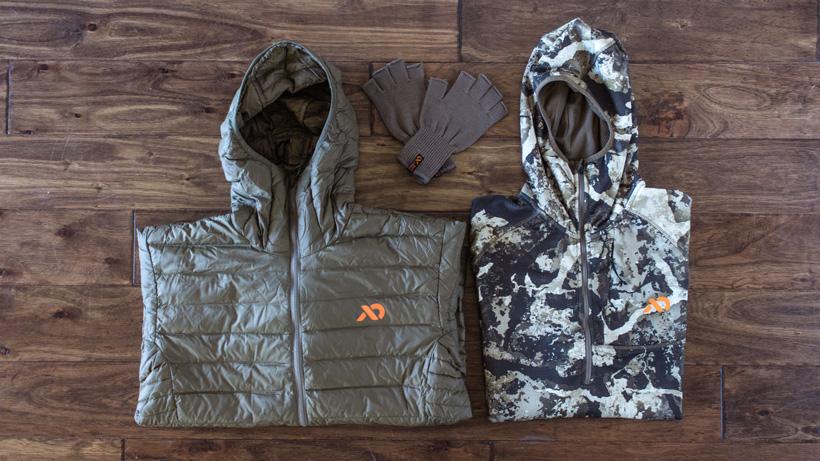
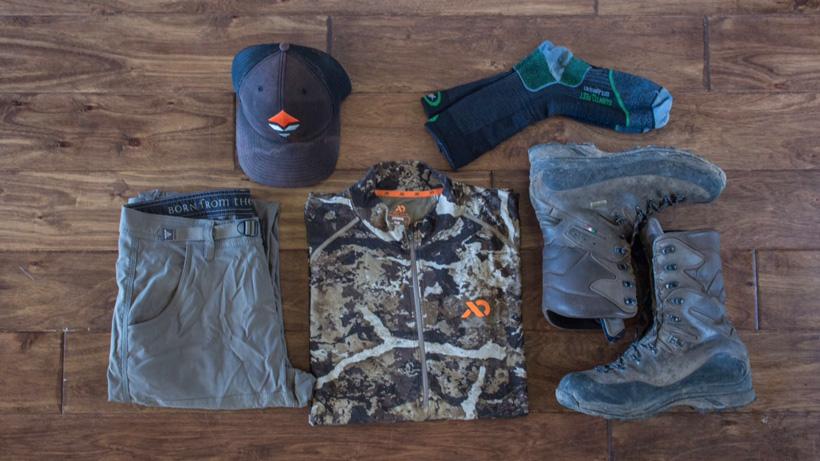


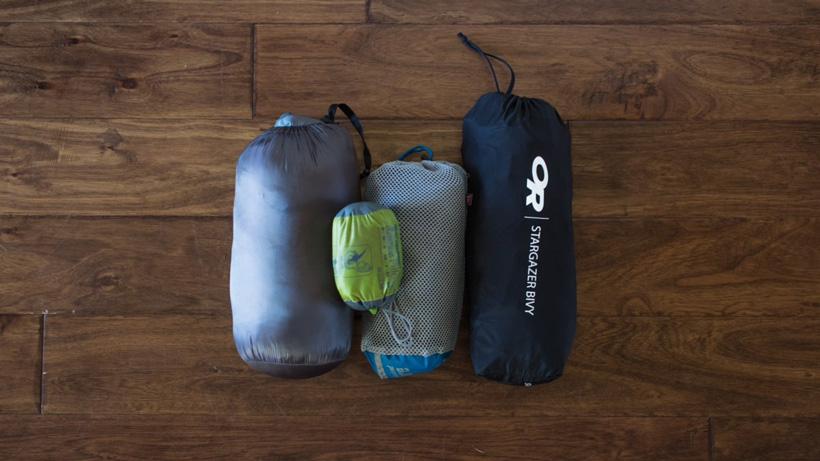
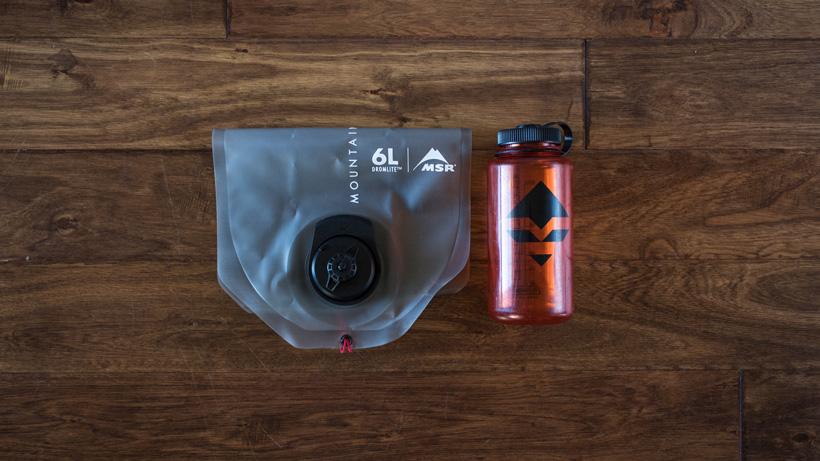
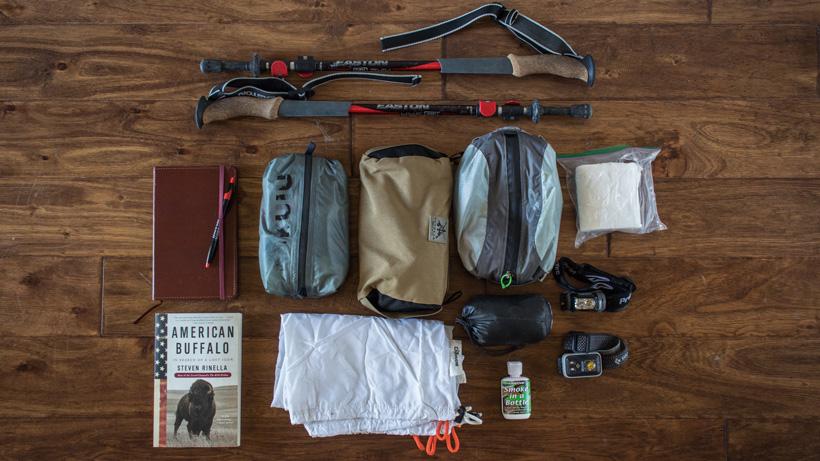
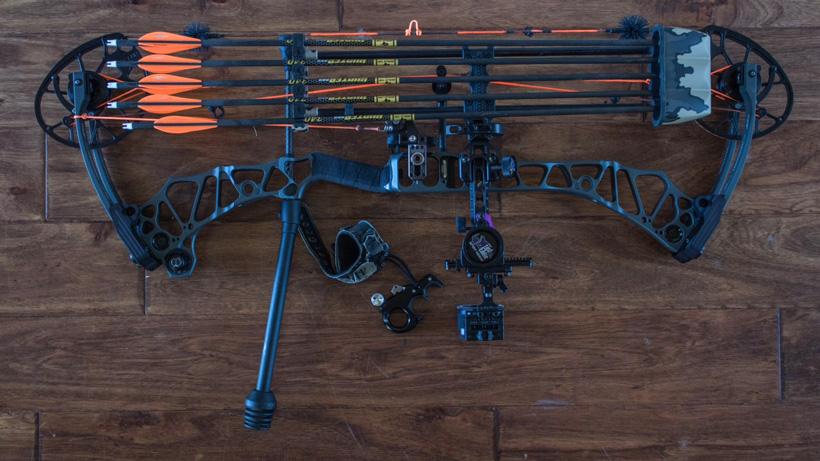

After a long offseason of planning and waiting, opening day is almost here. For 2019, I will be plunging into my first high country deer hunt here in my new home state of Utah. This hunt will take place in an area very conducive to long hours of glassing followed by lung-burning sprinting over and around summits surpassing 10,000’. My first hunt over the opening weekend will consist of a three-day bivy style hunt where I will carry my camp with me every step of the way and camp will consist of wherever I stop for the night. My gear list will not vary much from my typical backpack hunt with the exception of opting for lighter weight clothing and a new sleep system I’m trying for this hunt. We will have a video published to our YouTube channel later this week or early next week where I walk through each piece of gear.
The main theme of this hunt will be light, fast and mobile.
DAVE BARNETT EARLY SEASON ARCHERY MULE DEER GEAR LIST
This hunt will begin mid-August, which will greatly reduce the amount of clothing I will need to pack in addition to what I will be wearing into the field. Mid-day at my house, temperatures are currently hitting or exceeding 90 degrees; however, due to the elevation of the primary hunting area, I can expect nighttime temperatures to dip into the low 40s while midday temperatures may reach 80 degrees. This calls for mostly lightweight clothing with a few light insulating items. The only additional clothing items in my pack for this hunt will be First Lite Klamath Hoody, Brooks Down Sweater and Talus Fingerless Gloves. The Klamath Hoody is my go-to layer for every season, but will really shine during early morning and late evening hikes as well as when sitting on glassing points on this hunt. Additionally, the hood will provide great protection from the harsh sun conditions found in the high country. The Brooks Down Sweater will see very little use, but at a mere 10.9 oz, this is going to be a welcome addition to time spent at camp as well as adding a small bump of warmth to my lightweight sleep system.
My worn clothing will very likely be my typical outfit for 75% of this hunt and is very simple and straightforward. For pants, I will be using the trusty Prana Stretch Zion pants, which are highly breathable, dexterous and quick drying. For my top, I will be wearing a First Lite Fuse Quarter-Zip followed by a simple goHUNT ball cap. My boots of choice will be the same pair I used last season: the Zamberlan 980 Outfitter GTX. At over four pounds these boots are heavy; however, a nagging ankle injury from high school has created a solid mental block that hasn’t allowed me to try light options yet. For socks, I have chosen the Farm to Feet Damascus Lightweight, which had been an awesome option for me the past few seasons.
My pack of choice will be the same I’ve used for the past several years: the Mystery Ranch Metcalf. I’m pretty minimalistic in my approach to the gear I carry and this simple bag just fits my style to a T. While my entire loadout kit will be carried with me on this hunt I do enjoy the fact then when hunting from spike camps this 4,300 cubic inch bag can cinch down to practically nothing for day trips. Additionally, a rain fly will be packed to keep everything dry from nighttime dews and occasional rain squalls.
My optic setup is mostly unchanged this year and it is something that has worked great for me over the years. My trusty seven year old FHF gear Binocular harness will be strapped to my chest along with the FHF rangefinder pouch. For glass, I will be packing my Vortex 10X42 Razor binoculars, Ranger rangefinder and Viper HD 65mm Angled spotting scope. In addition to these, I will also be carrying my Slik 634CF tripod and Sirui VA-5 pan head along with a Phone Skope setup for my iPhone.
Because I want to stay entirely mobile on this hunt I really wanted to focus on the lightest sleep system I could muster while still maintaining some comfort. Years ago when I first got into backpack hunting I purchased a dirt cheap Outbound brand sleeping bag with a 40 degree rating because it was feather-light at 20 oz. However, I think I nearly got hypothermia because of it on several occasions. This season I picked up a few pieces of gear that have actually made this an ultralight option and really lightened my load. The Outdoor Research Stargazer bivy has been an awesome addition to my system and something I wish I would’ve purchased long ago! With this, I can literally have camped rolled out—or packed—in under 10 minutes. Perfect for this style of hunting. In addition to its super lightweight properties and fast setup times, it also adds some bonus warmth to my sleeping bag at night, particularly when fully zipped.
My sleeping pad of choice for the past few years has been the Big Agnes Insulted Air Core, a model that is no longer made. For some added comfort I’ll also pack the Sea to Summit Aeros pillow—a must have!
In this part of the state there is still some snow to be encountered, but reliable water sources can be hard to find, particularly when on a true bivy hunt. Because this is only a three-day hunt I will be packing all of my water with me as well as opting to go stoveless to conserve water for drinking only. My simple setup will consist of a 32oz goHUNT Nalgene and a 6L MSR Dromlite bag.
The remainder of my gear will consist of the typical combination of first aid items, a kill kit and other small pieces of creature comforts. The bulk of these will be covered in the accompanying video of my gear list.
My bow of choice for this hunt will be the 2019 Mathews Traverse, which is set up with a Hamskea Hybrid Hunter rest, Spot Hogg Fast Eddie XL 5-pin bow sight, 10” Bee Stinger Sport Hunter stabilizer with a 10 degree offset bracket, Tightspot 5-arrow quiver and the Carter Wise Choice release. My arrows for this season are an old standby: Goldtip Pro Hunter 340’s tipped with a 100gr Grim Reaper Razor Tip broadhead with a finished weight of 430 grains. This bow is currently shooting absolutely lights out and I know that if I do my part the arrow will find its mark.
Gear lists are always fun to tweak and experiment with and, with this being my first high country deer hunt, I can definitely say this gear set will not be permanent. Please feel free to ask questions, add suggestions and share stories. Everyone—myself included—is always looking to learn!